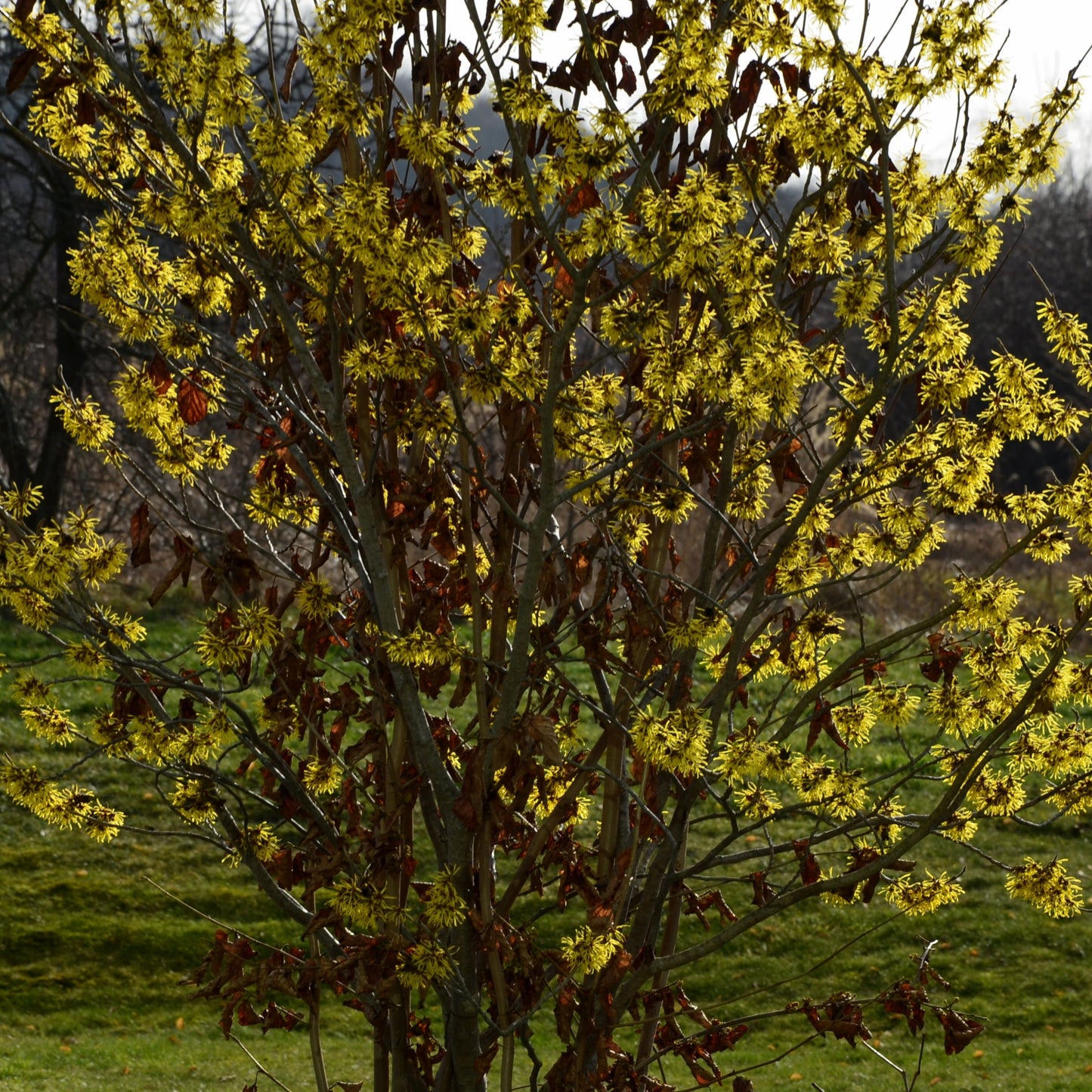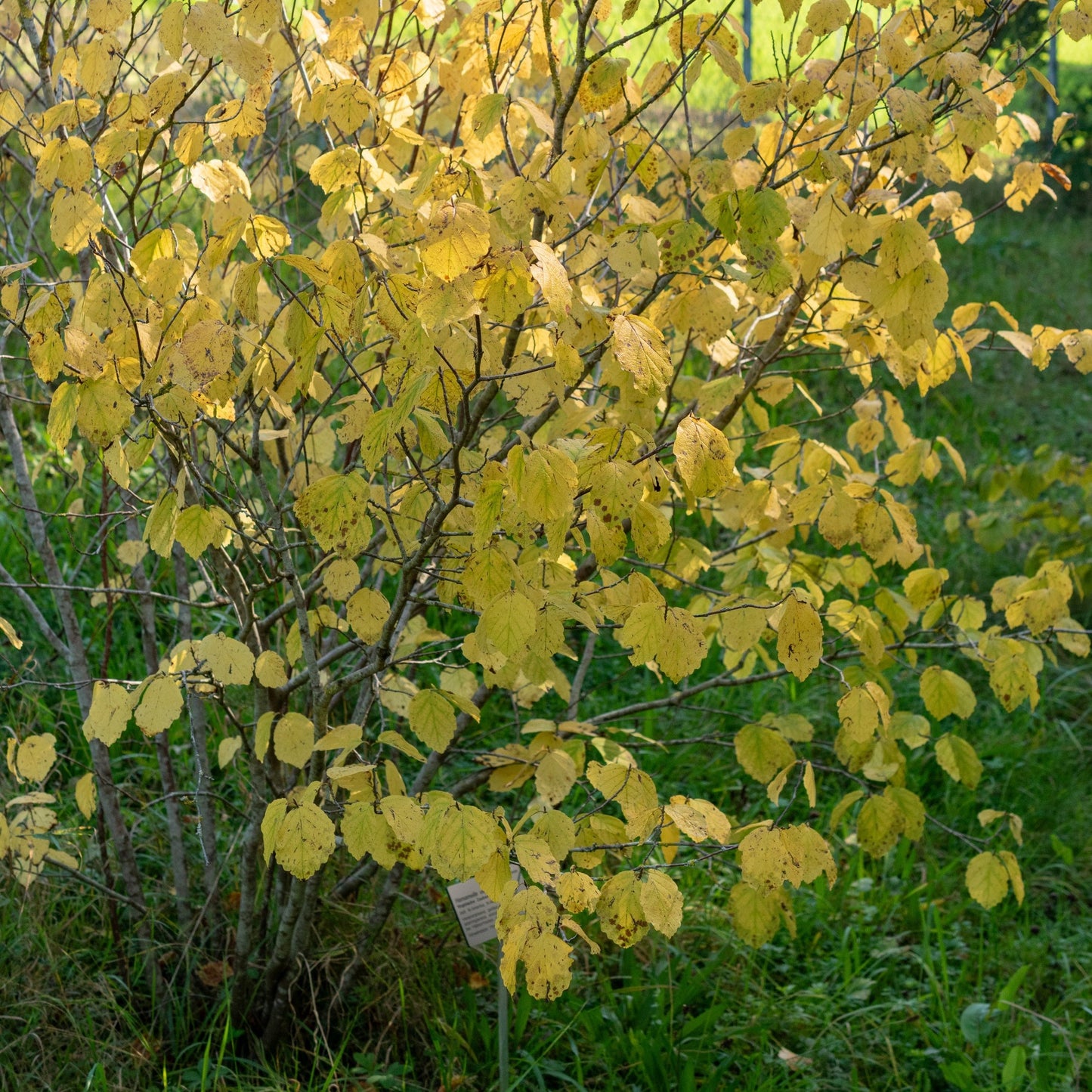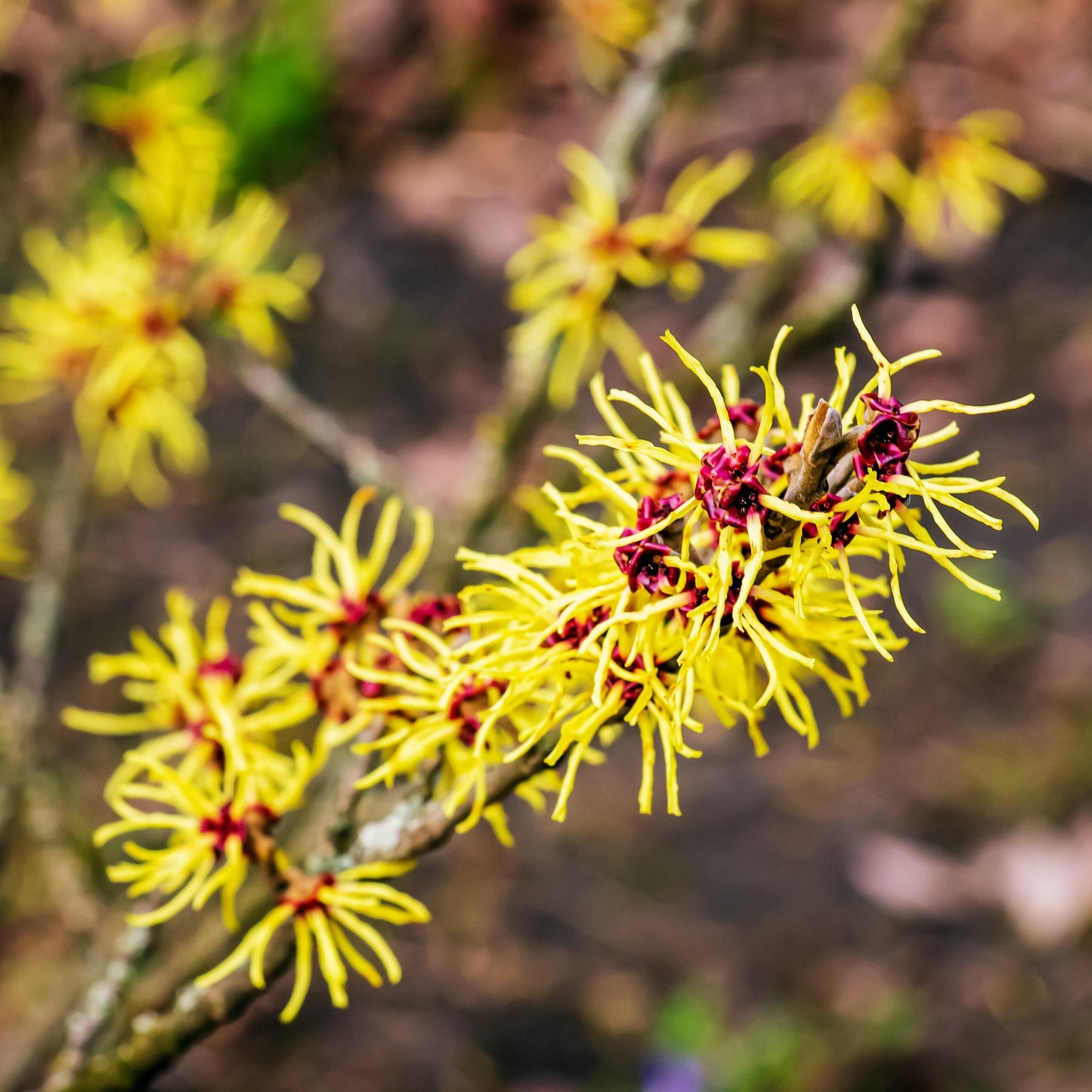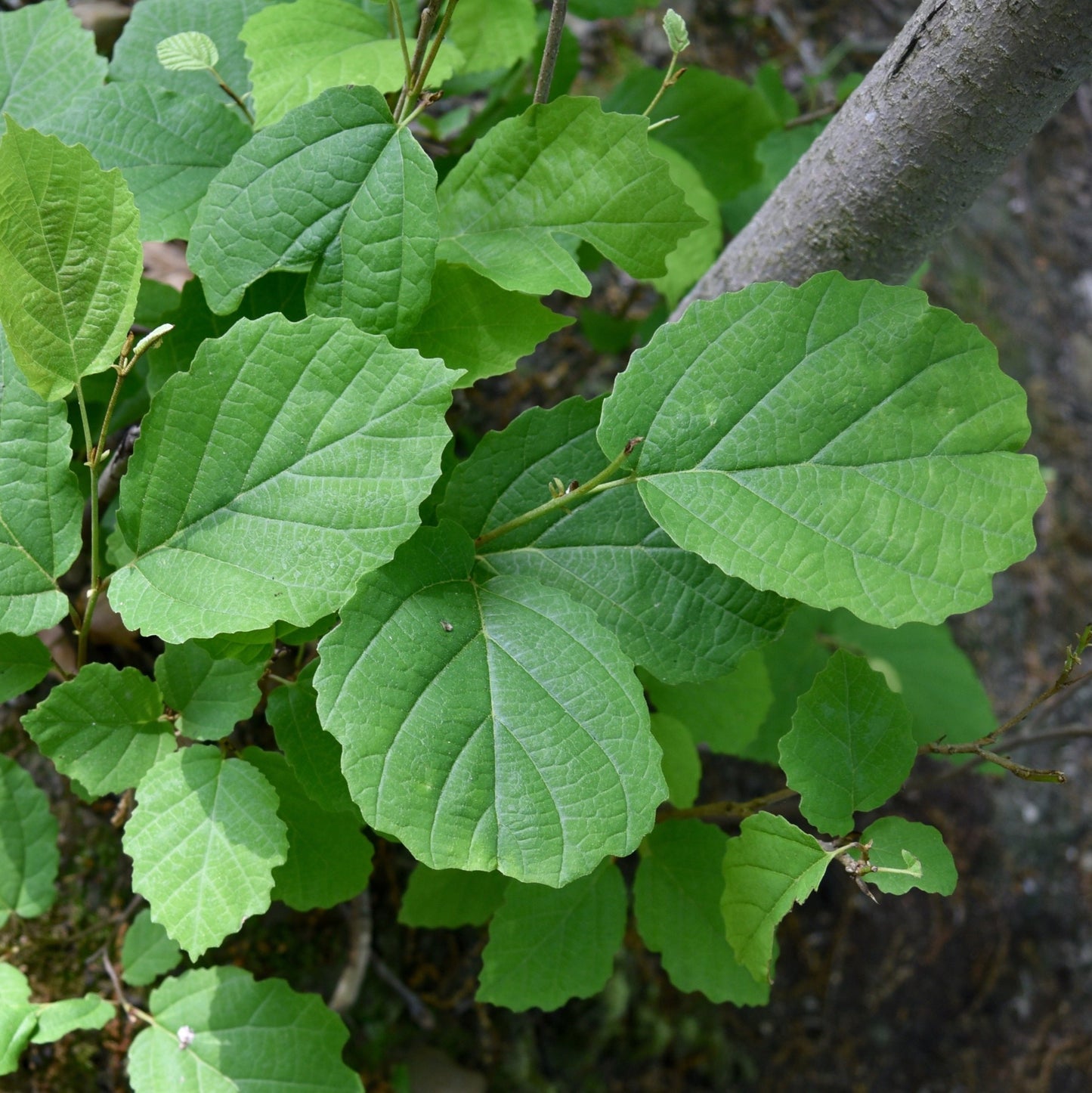Limited Quantities - Reserve Now For Fall
Common Witchhazel
Common Witchhazel
Couldn't load pickup availability
Hamamelis virginiana
Common Witchhazel
The Common Witchhazel (Hamamelis virginiana) is a native deciduous shrub or small tree celebrated for its unusual late-fall blooms, graceful form, and ecological value. Flowering when most of the landscape has gone dormant, it brightens woodland borders and understory plantings with yellow, ribbon-like flowers that appear from October into December.
This adaptable, shade-tolerant species is perfect for woodland edges, native gardens, and foundation plantings, where its elegant branching, wildlife value, and seasonal interest shine year after year.
Common Witchhazel Overview
| Attribute | Details |
|---|---|
| 🌿 Botanical Name | Hamamelis virginiana |
| 🏷️ Common Names | Common Witchhazel, American Witchhazel |
| 🌳 Mature Height | 10–20 feet |
| 🌐 Mature Width | 10–15 feet |
| 📈 Growth Rate | Moderate (12–18 inches per year) |
| ⏳ Lifespan | 40–60 years |
| 🧊 USDA Zones | 3–8 |
| ☀️ Sun Preference | Full sun to full shade (best flowering in part sun) |
| 🧱 Soil Type | Moist, well-drained loam, clay, or sandy soils |
| ⚖️ Soil pH | Slightly acidic to neutral (5.5–7.0) |
| 💧 Water Needs | Moderate; prefers evenly moist soil |
| 🌸 Flower Color | Bright yellow with narrow, ribbon-like petals |
| 🍁 Fall Color | Golden-yellow to light orange foliage |
| 🐝 Pollination | Attracts late-season pollinators and native insects |
| 🌿 Growth Habit | Vase-shaped to rounded, multi-stemmed shrub |
| ↔️ Spacing | 8–12 ft for borders; 12–15 ft for open form |
| 🏡 Landscape Uses | Shade gardens, understory plantings, native borders, hedges |
| 🧹 Maintenance Level | Low |
Environmental Benefits
🌸 Blooms in late fall when few other plants offer pollinator support
🪶 Provides shelter and structure for small birds and wildlife
🌿 Ideal for naturalizing in woodland or shaded landscapes
🌎 Native to eastern North America; supports local biodiversity
Pros & Cons
| ✅ Pros | ⚠️ Cons |
|---|---|
| 🌼 Unusual fall-blooming shrub adds off-season interest | ❄️ Late flowers may be reduced by early winter frosts |
| 🐝 Supports native pollinators when few other blooms exist | 🌱 Slow to establish in dry or compacted soils |
| 🌳 Graceful form and golden fall foliage | ✂️ Pruning may be needed to maintain open form in tight spaces |
| 🌞 Tolerates sun to shade with adaptable performance | 💧 Prefers consistent moisture; drought may reduce bloom quality |
| 🌿 Excellent for woodland gardens and natural landscapes | 🪵 May grow large in unmanaged beds over time |
Planting & Care Guide
🛁 Water thoroughly after planting and maintain even moisture
🕳️ Dig a hole twice the width of the root ball; plant at natural soil depth
🌾 Mulch 2–3 inches around the base to retain moisture and suppress weeds
💦 Water regularly during the first two years; less frequently once established
✂️ Prune lightly after flowering to shape or thin crowded stems
🧪 Fertilize in early spring with compost or a low-nitrogen native shrub mix
The Common Witchhazel is a timeless native treasure, bringing late-season blooms, gentle form, and ecological value to shaded and naturalized spaces. Whether planted as a specimen shrub, part of a native hedge, or along woodland edges, it offers four-season interest and quiet elegance in every landscape.
Share








